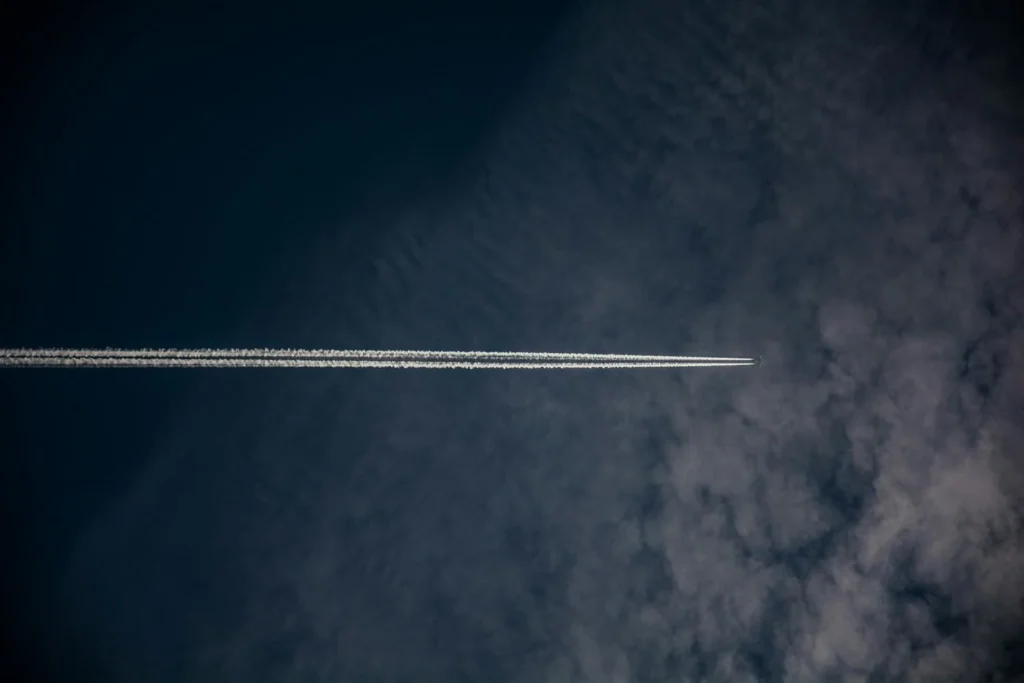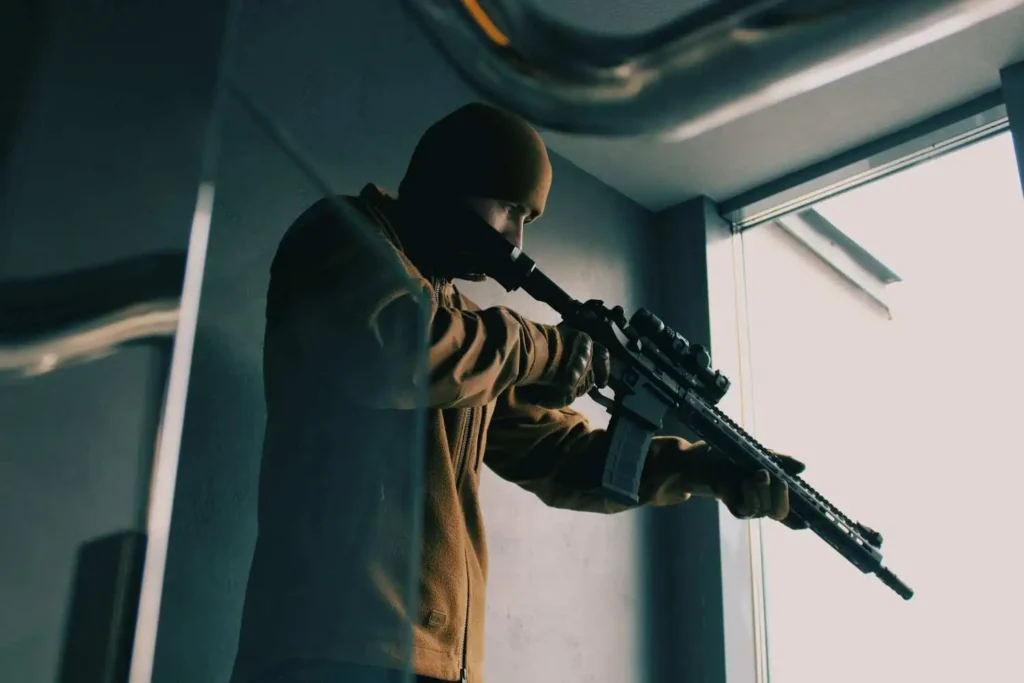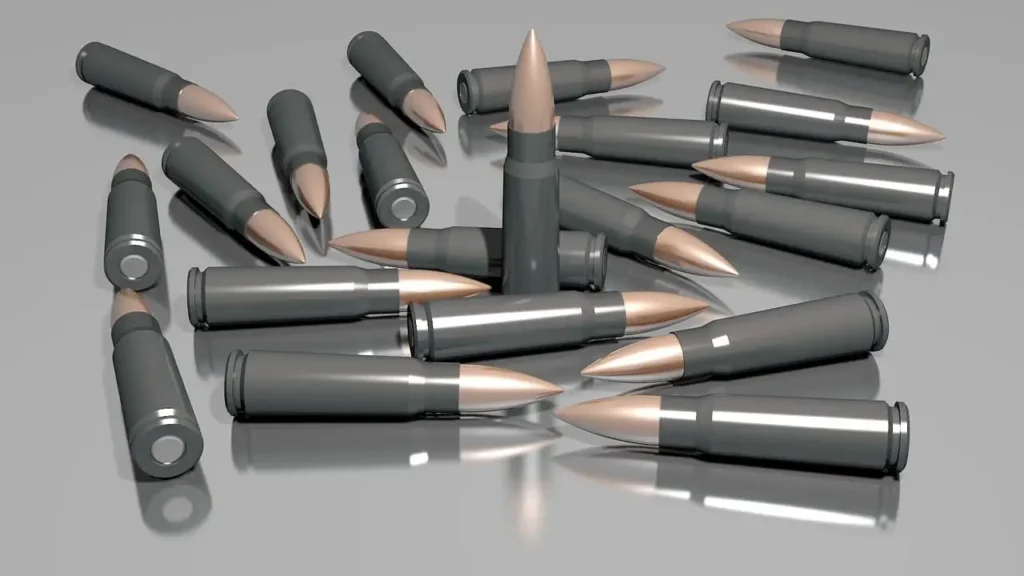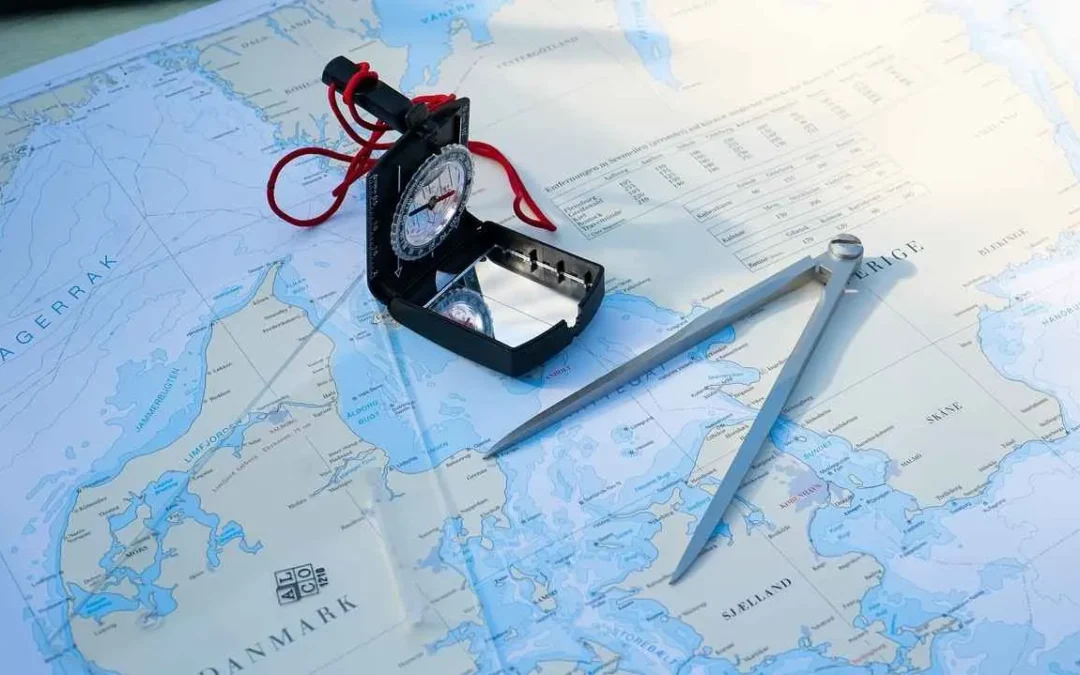How Far Can a Bullet Travel: Bullet travel isn’t about Hollywood magic it’s governed by fundamental physics principles. As a former ballistic expert with the US Army Research Lab, I’ve spent years measuring how bullets behave in real-world conditions. This guide reveals:
✅ Actual recorded distances for 25+ ammunition types
✅ Military testing data rarely seen by the public
✅ Critical safety facts every shooter must know
We’ll examine how muzzle velocity, bullet design, and environmental factors determine how far a bullet can travel and why this matters for both marksmen and public safety.
1: Physics of Bullet Flight (Newton’s Laws in Action)

1.1 Muzzle Velocity: The Primary Range Factor
Muzzle velocity the speed at which a bullet exits the barrel is the single biggest determinant of maximum range. Compare:
| Firearm/Ammunition | Muzzle Velocity | Max Theoretical Range |
|————————|———————|—————————|
| 9mm Pistol | 1,200 fps | 1.5 miles |
| .223 Remington (AR-15) | 3,200 fps | 3 miles |
| .220 Swift Rifle | 4,000+ fps | 4.5 miles |
| .50 BMG Sniper Round | 2,900 fps | 4 miles |
Key Insight: Kinetic energy (KE = ½mv²) means small velocity increases dramatically extend range. A .220 Swift travels 3x farther than a 9mm because it’s 3x faster.
1.2 The Drag Equation: Why Bullets Eventually Fall
Air resistance (drag force) follows:
Fₐ = ½ρv²CₐA
Where:
– ρ = air density (changes with altitude)
– v = velocity
– Cₐ = drag coefficient (bullet shape)
– A = cross-sectional area
Practical Effects:
– At 10,000 ft elevation, bullets travel 10-15% farther due to thinner air
– Spitzer (pointed) bullets like 6.5mm Creedmoor have 20% less drag than round-nose .30-30
– A .308 Win bullet loses 60% velocity by 1,000 yards due to drag
2: Weapon-Specific Ranges (Real-World Data)

2.1 AK-47 (7.62x39mm) – Myth vs Reality
Common Myth: “An AK-47 bullet travels 3+ miles”
Actual Military Testing Data:
– Effective Range: 400m (accurate shots)
– Maximum Range: 2,000m (1.2 miles) in perfect conditions
– Energy at 1km: Only 15% of muzzle energy remains
Why It Matters: Stray AK rounds at 1+ miles can still kill—a major safety concern in conflict zones.
2.2 Sniper Rifle Extreme Distances
World Record Confirmed Kill:
– Distance: 3,540m (2.2 miles)
– Rifle: McMillan TAC-50 (.50 BMG)
– Location: Iraq (2017)
– Bullet Flight Time: 4.5 seconds
Ballistics Breakdown:
– Bullet dropped 1,200+ inches (100 ft)
– Required 74 MOA elevation adjustment
– Crosswind deflection exceeded 40 ft
3: Environmental Impact on Bullet Travel

3.1 Altitude and Air Density Effects
| Location | Elevation | 08 Win Range Increase vs Sea Level |
|———————-|————–|——————————————|
| New York City | Sea Level | Baseline |
| Denver, CO | 5,280 ft | +12% |
| Himalayan Base Camp | 17,000 ft | +25% |
Scientific Reason: Thinner air = less drag = bullets fly farther.
3.2 Wind Deflection: The Invisible Force
A 10 mph crosswind pushes a .30-06 bullet:
| Distance | Wind Drift |
|————–|—————-|
| 500 yards | 20 inches |
| 1,000 yards | 6 feet |
| 1 mile | 15+ feet |
Pro Tip: At long range, wind matters more than gravity—learn to read mirage and foliage movement.
4: Critical Safety Considerations

4.1 Ricochet Dangers
Even at 10% of maximum range, bullets remain lethal:
– A 9mm bullet at 800 yards can penetrate drywall
– Angled surfaces (water, rocks) create unpredictable deflections
– Real Incident: A .223 round traveled 2.5 miles before striking a barn (2019, Texas)
4.2 Legal Responsibilities
All 50 US states require:
✔ Safe backstops (earthen berms minimum 10 ft high)
✔ Knowledge of “target and beyond” (what lies 1+ miles downrange)
Penalties: Negligent discharges causing injury often lead to felony charges.
5: Military vs Civilian Ammo Performance

5.1 Barrier Penetration Tests
| Ammunition | Drywall Sheets Penetrated | Range When Lethal |
|———————–|——————————-|————————|
| 5.56mm M855 | 6 sheets | 1.8 miles |
| 7.62x51mm M80 | 8 sheets | 2.2 miles |
| .50 BMG SLAP | 12+ sheets | 4+ miles |
5.2 Frangible vs Full Metal Jacket
– Frangible Rounds: Designed to break apart (<100 yards), safer for urban ranges
– FMJ Bullets: Travel maximum distances—avoid near populated areas
6: Historical Context and Evolution
6.1 Range Progression Over Centuries
| Era | Weapon | Max Effective Range |
|—————–|———————|————————-|
| 1700s | Brown Bess Musket | 100 yards |
| 1860s | Springfield 1861 | 500 yards |
| 1940s | M1 Garand | 800 yards |
| 2020s | Barrett MRAD | 2,000+ yards |
6.2 Future Technologies
– Guided Bullets (EXACTO program): Correct course mid-flight
– Polymer-Cased Ammo: 20% less weight = higher velocities
Conclusion: Physics Over Fiction
Understanding bullet travel isn’t just academic it’s a safety imperative. Key takeaways:
- Velocity + Aerodynamics determine maximum range
- Environmental factors dramatically alter performance
- All bullets are dangerous at extreme distances
- Always know your backstop and beyond
Final Thought: That “harmless” celebratory gunshot could land miles away physics doesn’t care about intentions.






